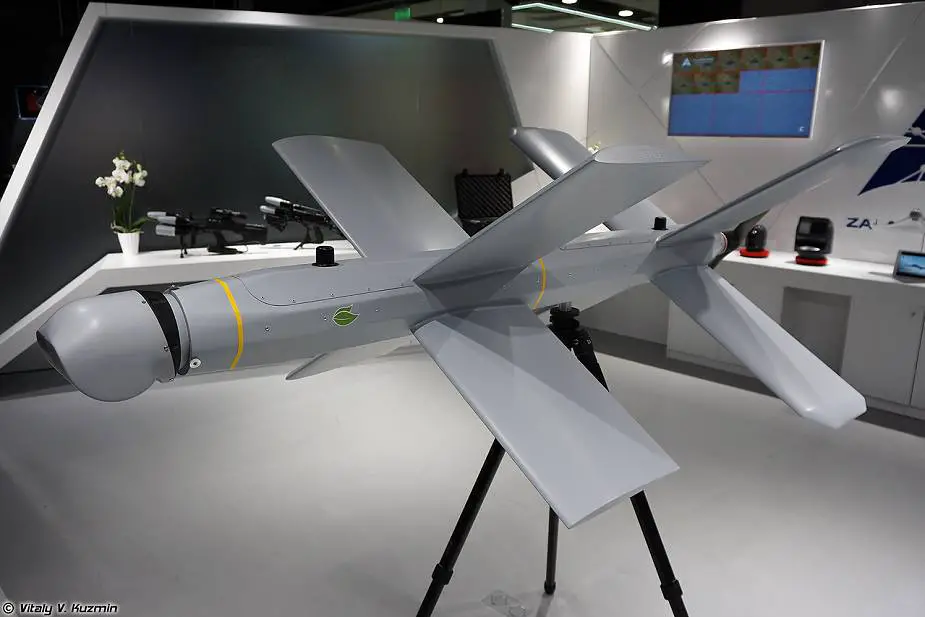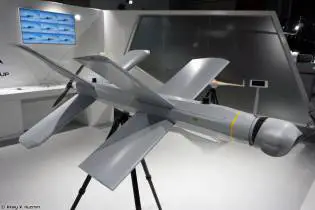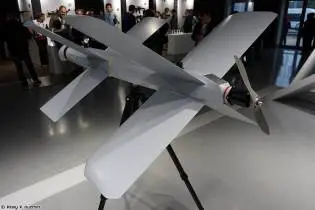- Army
- Air Defense Systems
- Anti-tank systems and vehicles
- Armored Vehicles
- Armoured personnel carriers
- Artillery Vehicles and Weapons
- Command Post
- Communication Vehicles and Systems
- Electronic Warfare
- Engineer | Maintenance Vehicles
- Infantry Fighting Vehicles
- Main Battle Tanks
- Missiles
- Tactical and Logistic Vehicles
- Radars
- Unmanned Systems
- Weapons
- Navy
- Air
Lancet-3
Lancet-3
Loitering munition / Suicide or Kamikaze drone - Russia

Description
The Lancet-3 is the largest variant in the Russian-made Lancet family of loitering munitions also called suicide or kamikaze drone. It was designed and developed by the Russian company Zala Group, a subdivision of the Kalashnikov Group. The drone was unveiled in June 2019 during the Military Technical Forum, a defense exhibition that was held in the Patriot Park in the suburbs of the city of Moscow. The Lancet-3 is designed to fly to a specific location, loiter in the area, and then attack a target. It is equipped with cameras and other sensors, which allow them to locate and track targets, and then strike with precision. The Lancet-3 was deployed for the first time to conduct combat operations during the Syrian civil war in November 2020. It is now widely used by the Russian troops deployed in Ukraine to destroy in priority the military equipment and the armored vehicles provided by the United States and European countries.
Lancet-3 variants:
- Lancet-1: smaller version weighing 5 kg with a payload of 1 kg.
Technical Data
| Design |
|
The Lancet-3 loitering munition consists of precision strike components, reconnaissance, navigation, and communications modules. The design of the Lancet-3 is based on a cylindrical fuselage with two pairs of X-shaped wings mounted at the front and rear of the fuselage. It incorporates a rear-facing pusher-prop arrangement in contrast to the more conventional puller-prop layout.
|
| Air Mobility |
|
The Lancet-3 is electrically powered with the engine mounted at the rear of the fuselage driving a two-blade propeller unit arranged in "pusher" mode. It is launched via a catapult launcher from the ground or sea platforms like the Raptor-class patrol boats. The drone can fly at a speed from 80 to 110 km/h with a maximum endurance of 40 minutes. It has a maximum range of 40 km (25 mi) and a maximum takeoff weight (MTOW) of up to 12 kg (26 lb).
|
| Payload |
| The Lancet-3 has a maximum gross takeoff weight of 12 kg and can carry a payload weighing up to 3 kg. It features optical-electronic guidance and a TV guidance unit, which allows the munition to be controlled during the terminal stage of flight. The drone can be armed either with high explosive (HE) or HE-fragmentation warheads. |
| Combat Use |
| The Lancet-3 can be used for reconnaissance, surveillance, and strike missions. According to Zala Aero engineers, it can be also used in air mining roles. It is a smart multipurpose weapon, capable of autonomously finding and hitting a target. It can transmit video, which allows for confirming successful target engagement. It features autonomous flight operations made possible through onboard artificial intelligence or pre-programming. |
Specifications
| Type | Targets |
| Loitering munition or reconnaissance drone | Armored vehicles, tanks, and artillery systems |
| Country users | Weight |
| Russia | 12 kg |
| Designer Country | Speed |
| Russia | 80 to 110 km/h |
| Warhead | Range |
| High Explosive (HE) or HE-fragmentation warheads. | 40 km |
| Operator | Endurance |
| 1 | 40 min |
Details View
 |
|
 |
 |
Pictures - Video



























